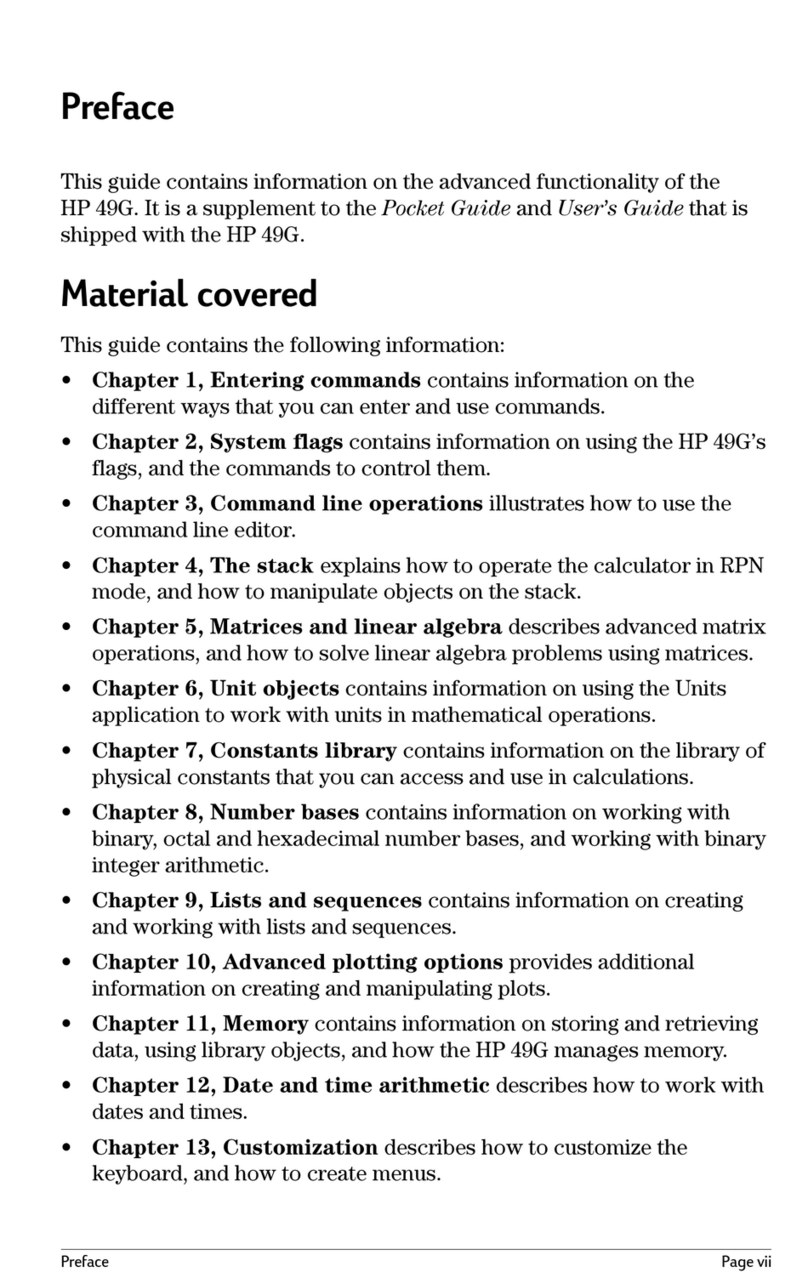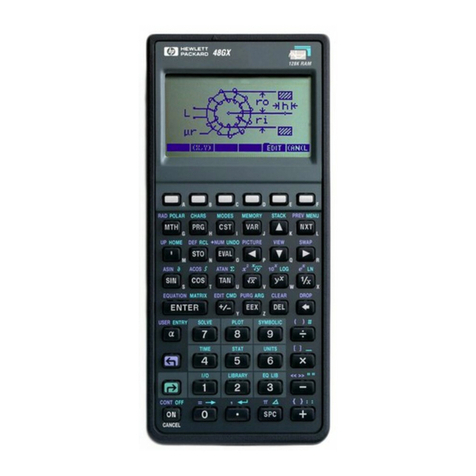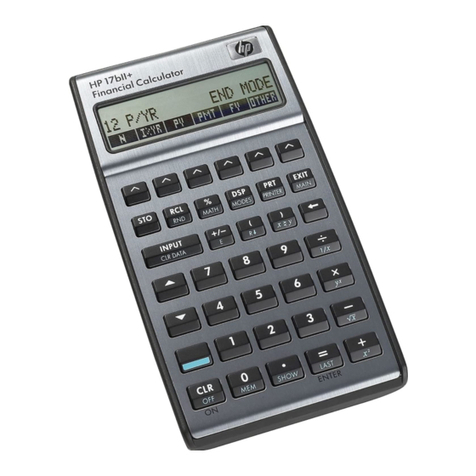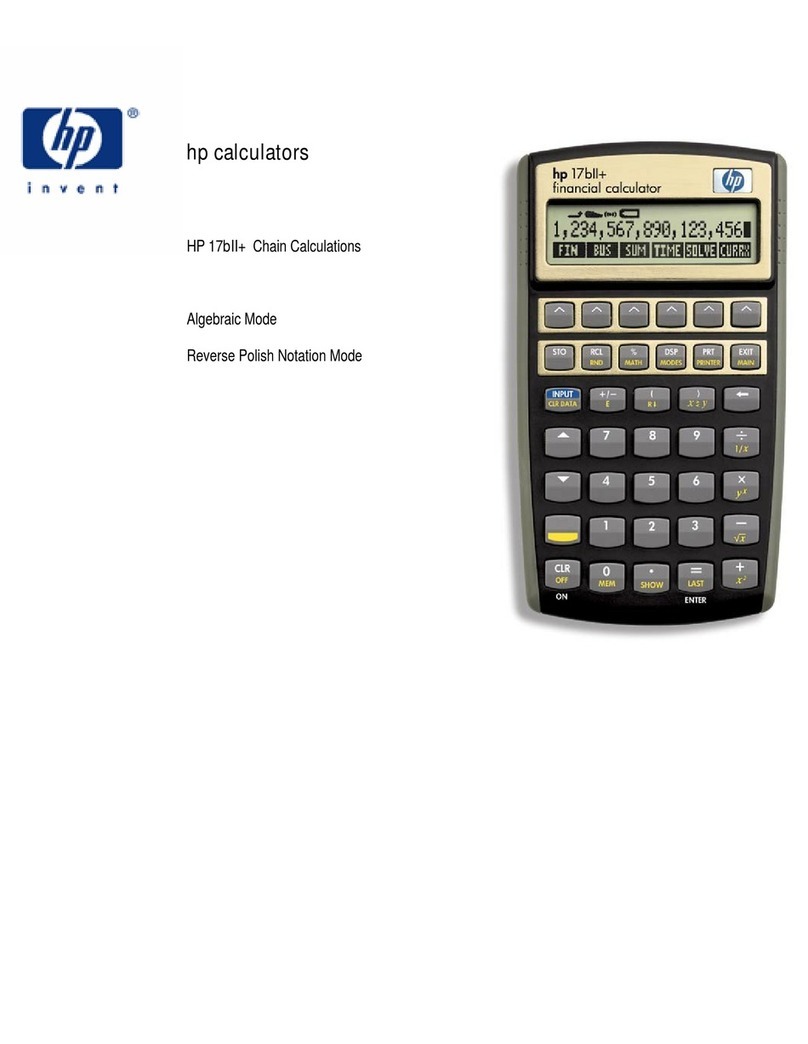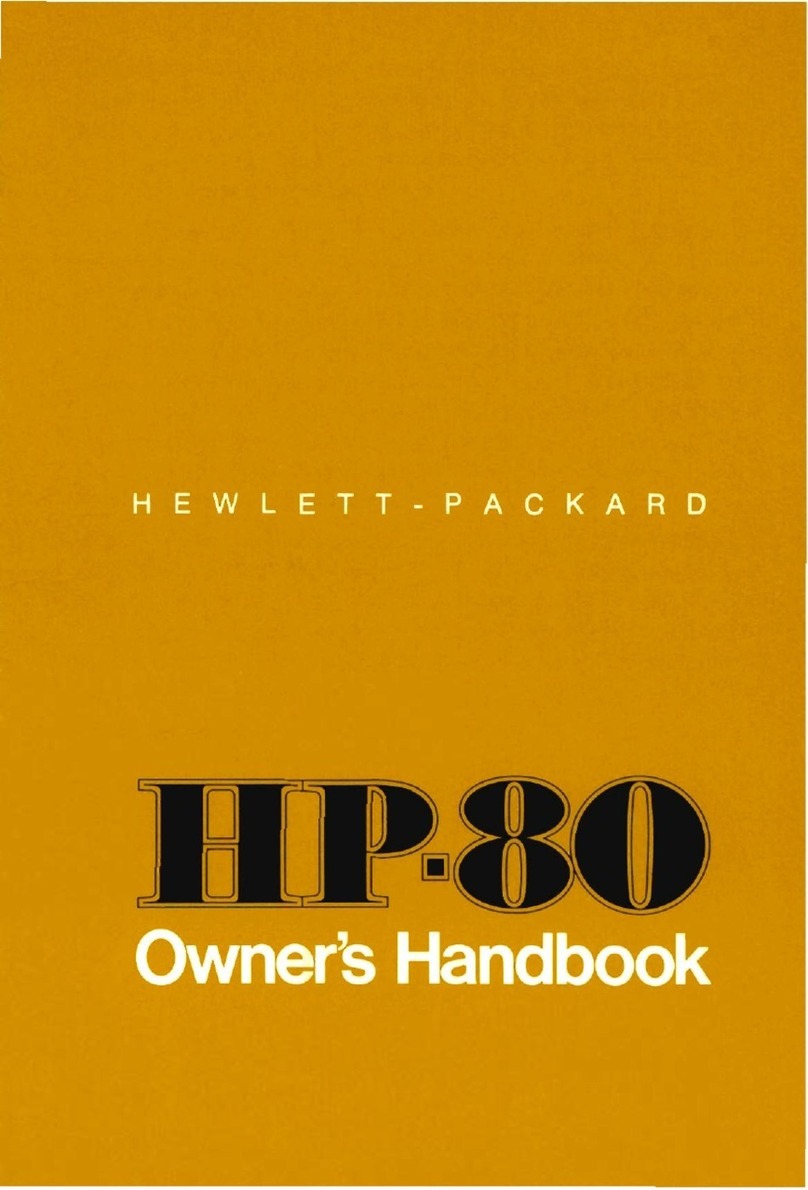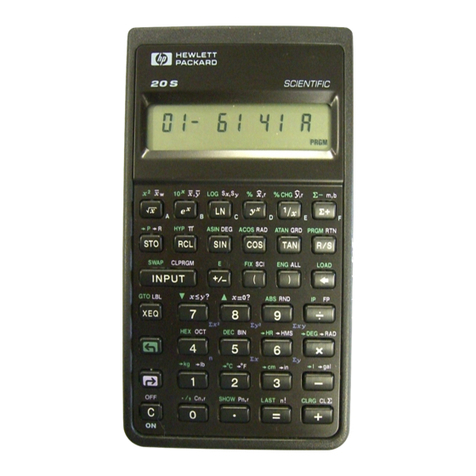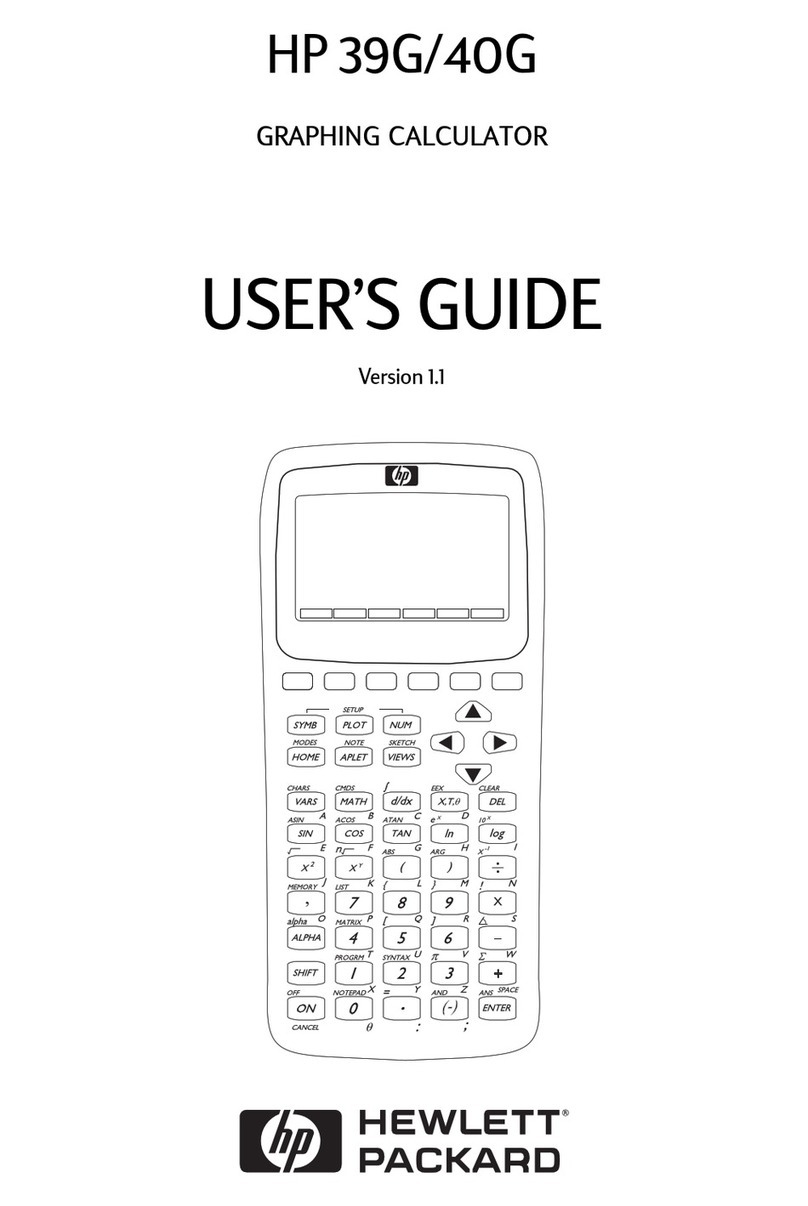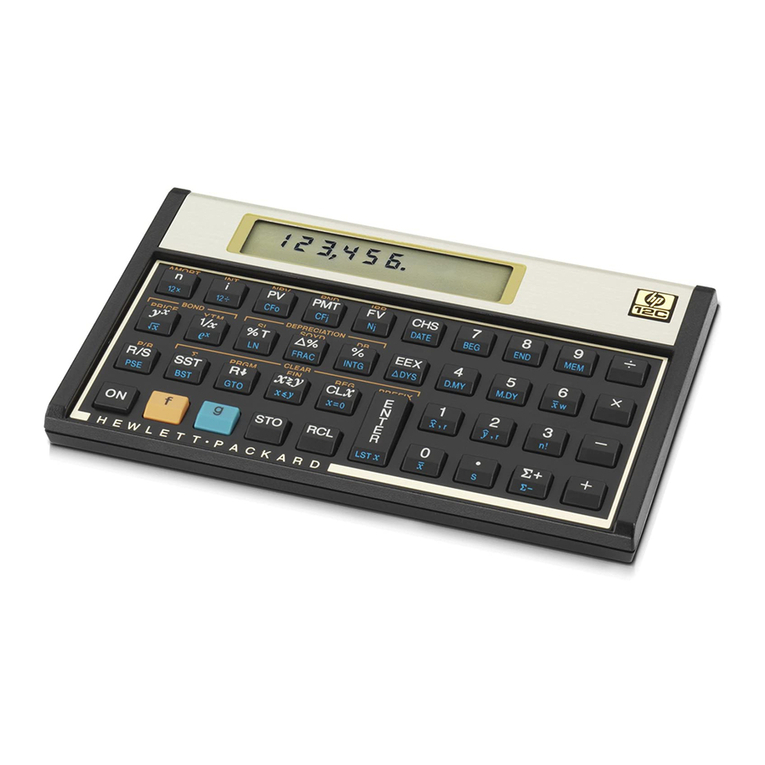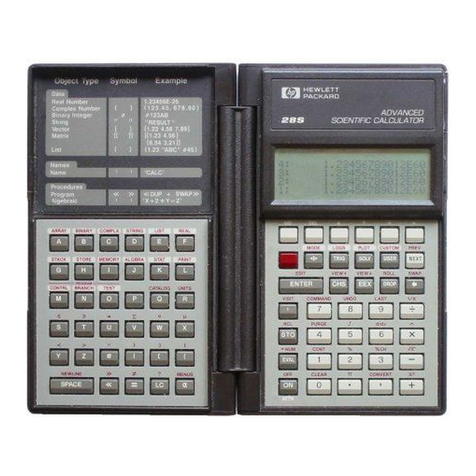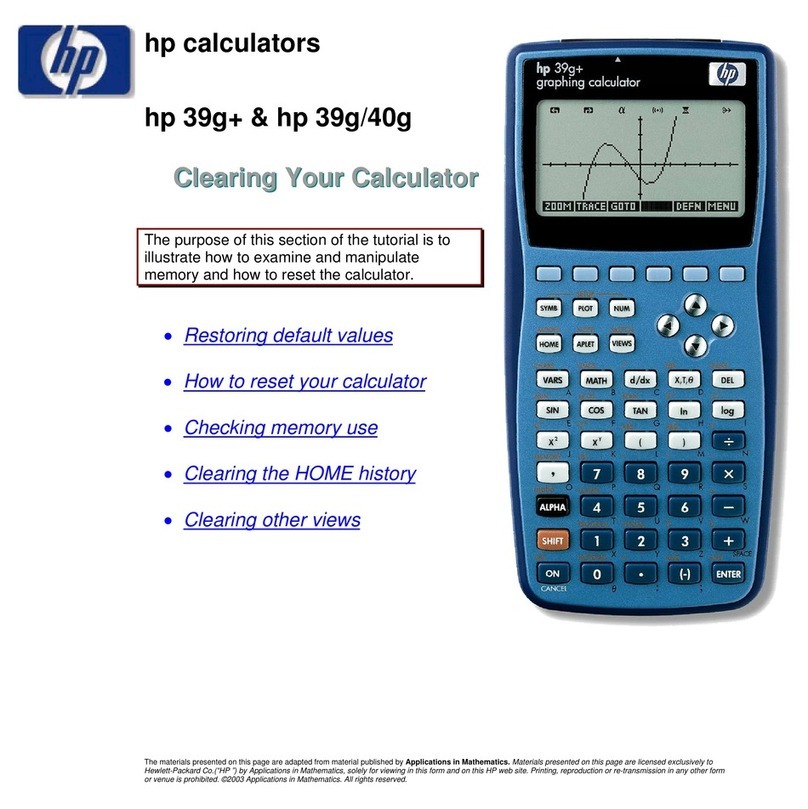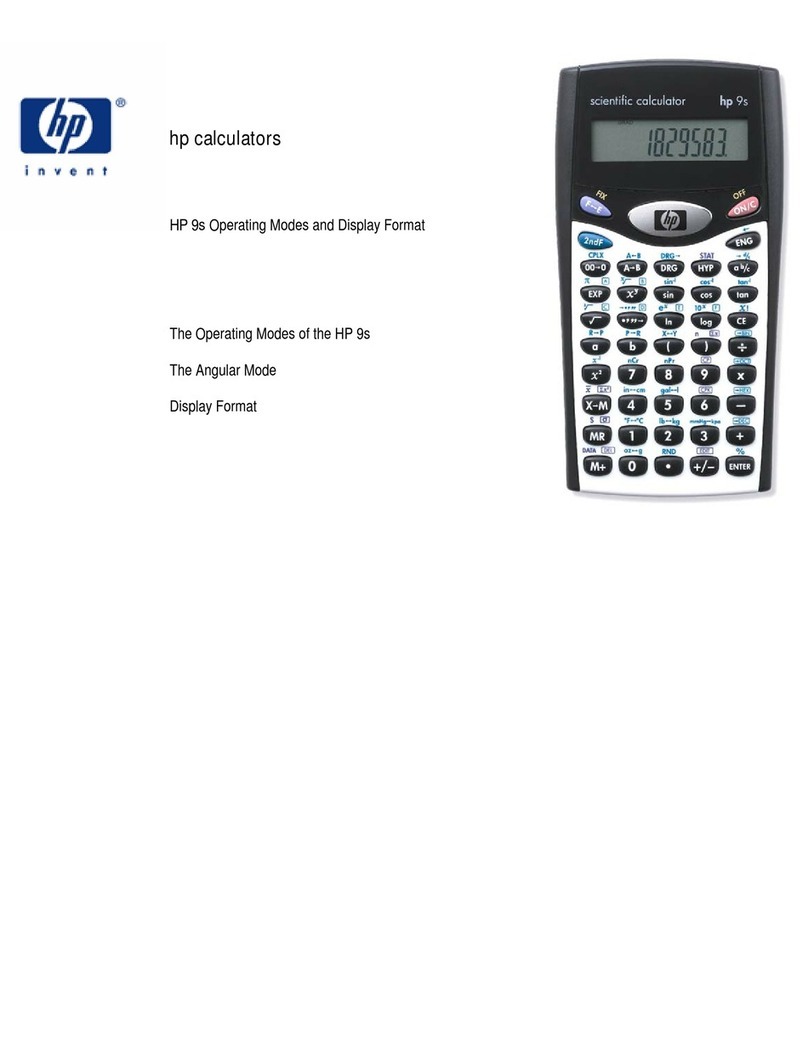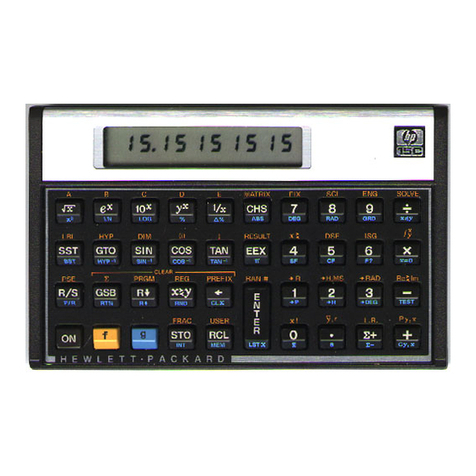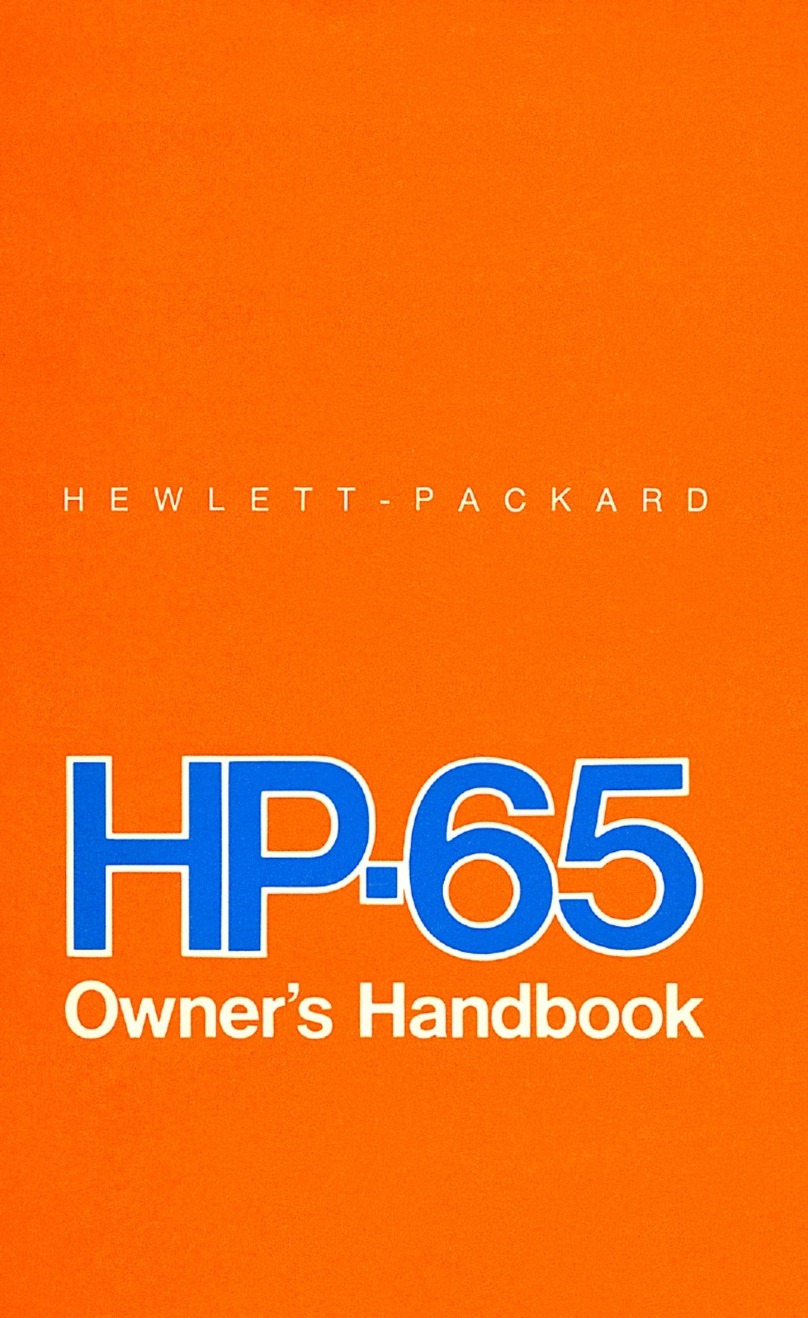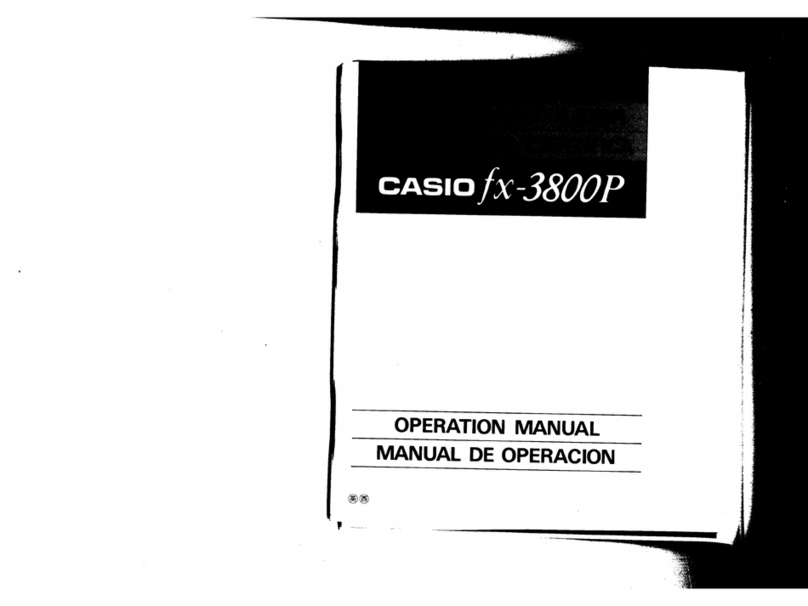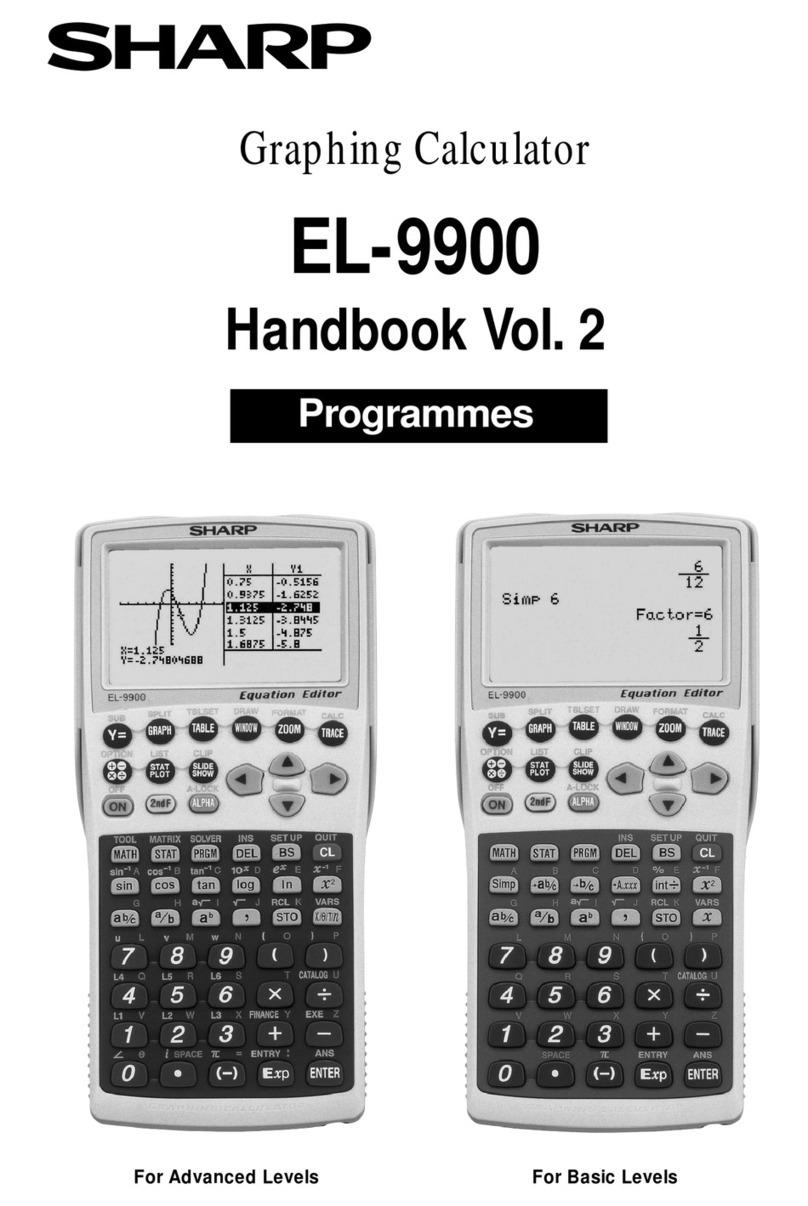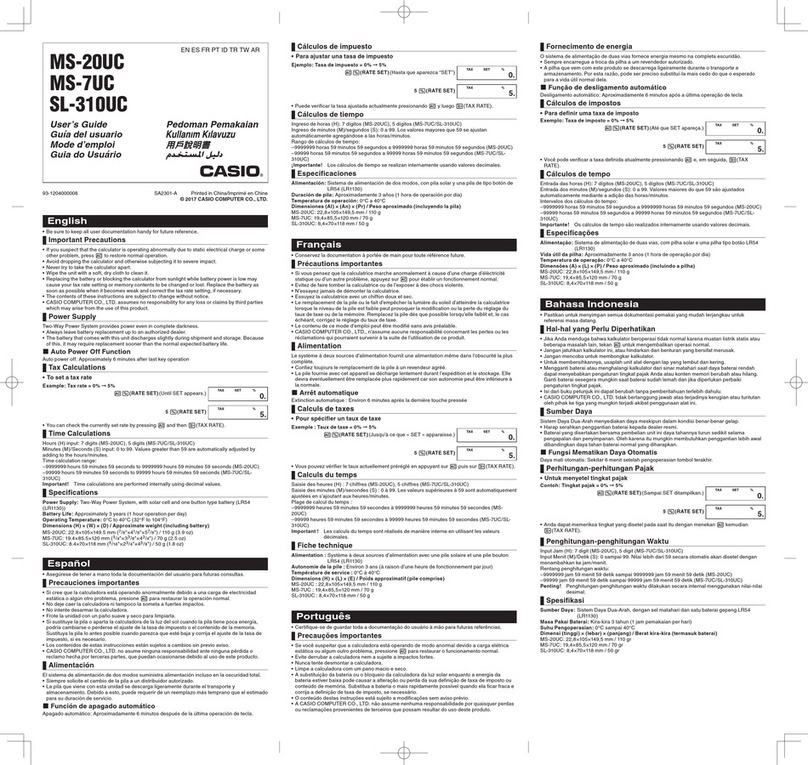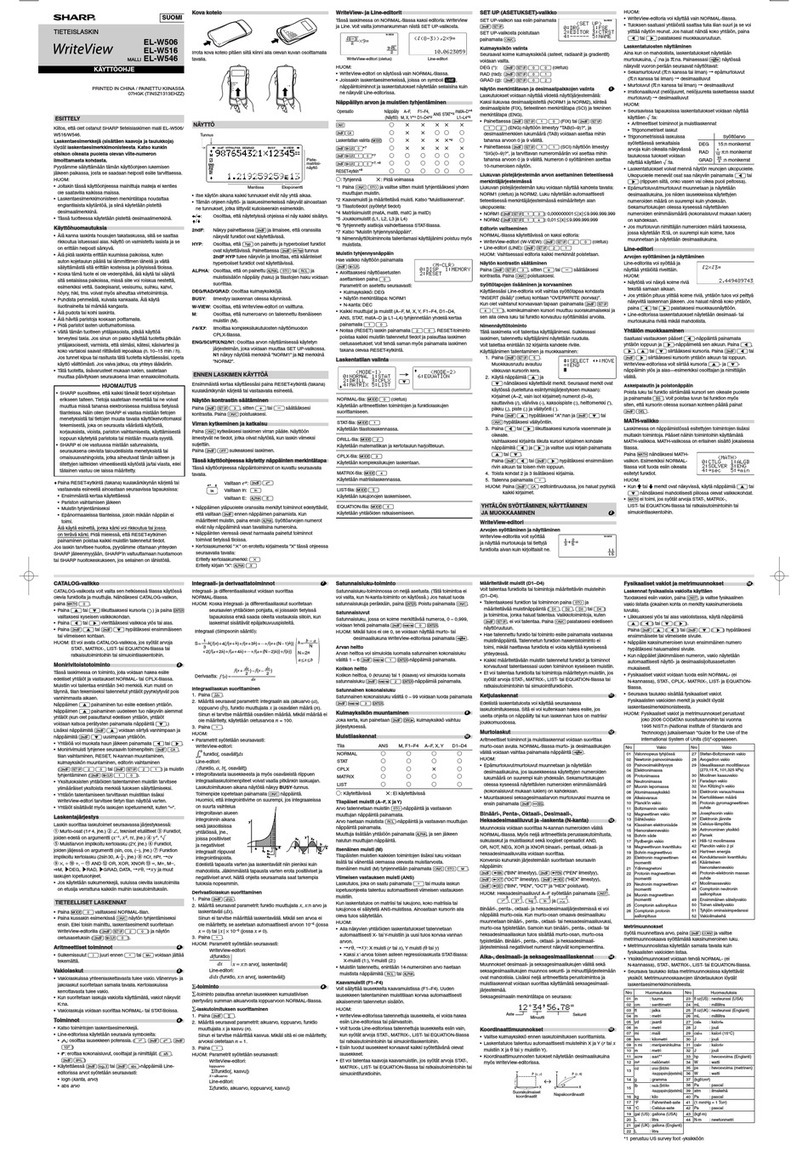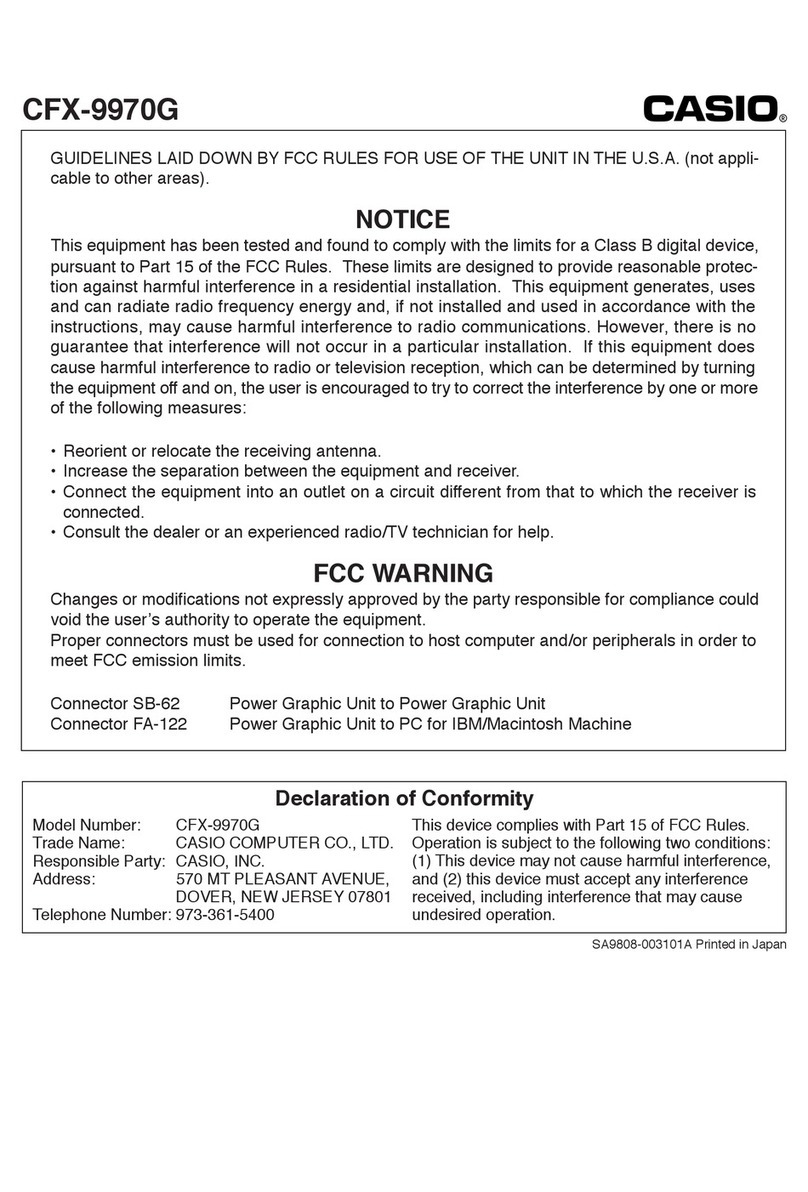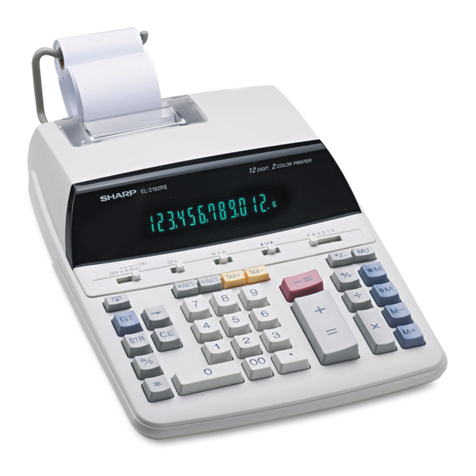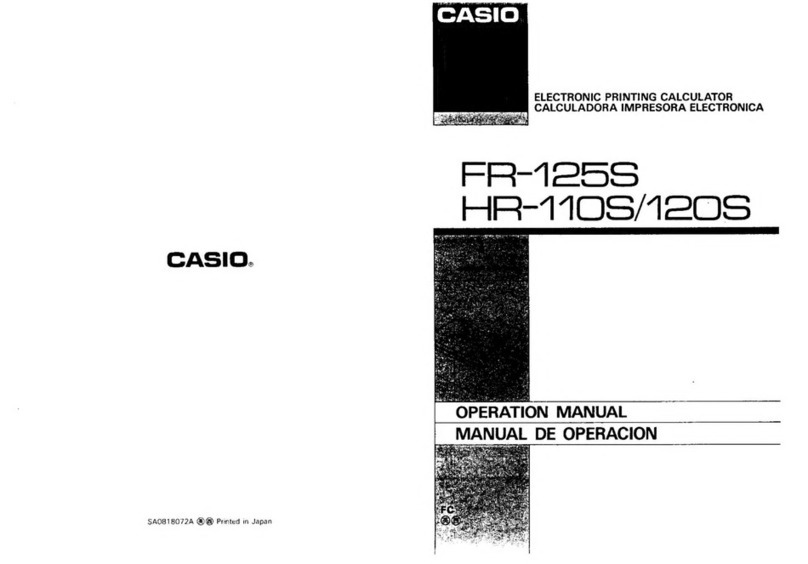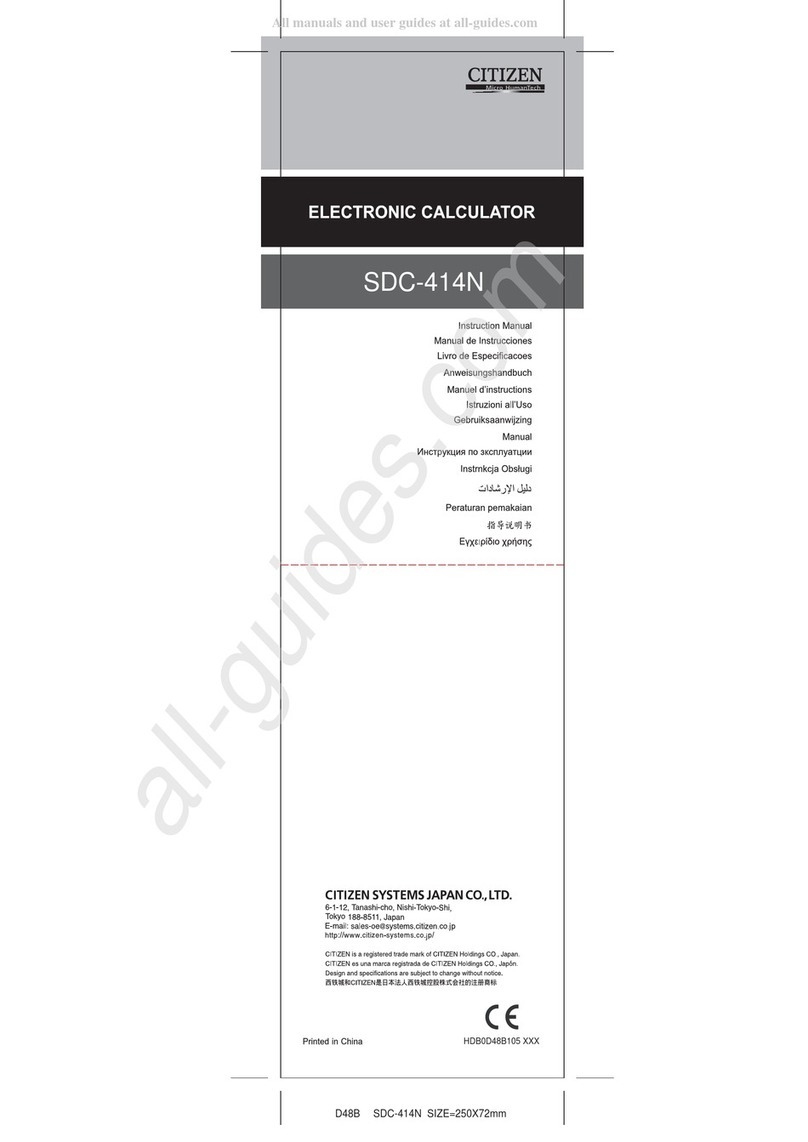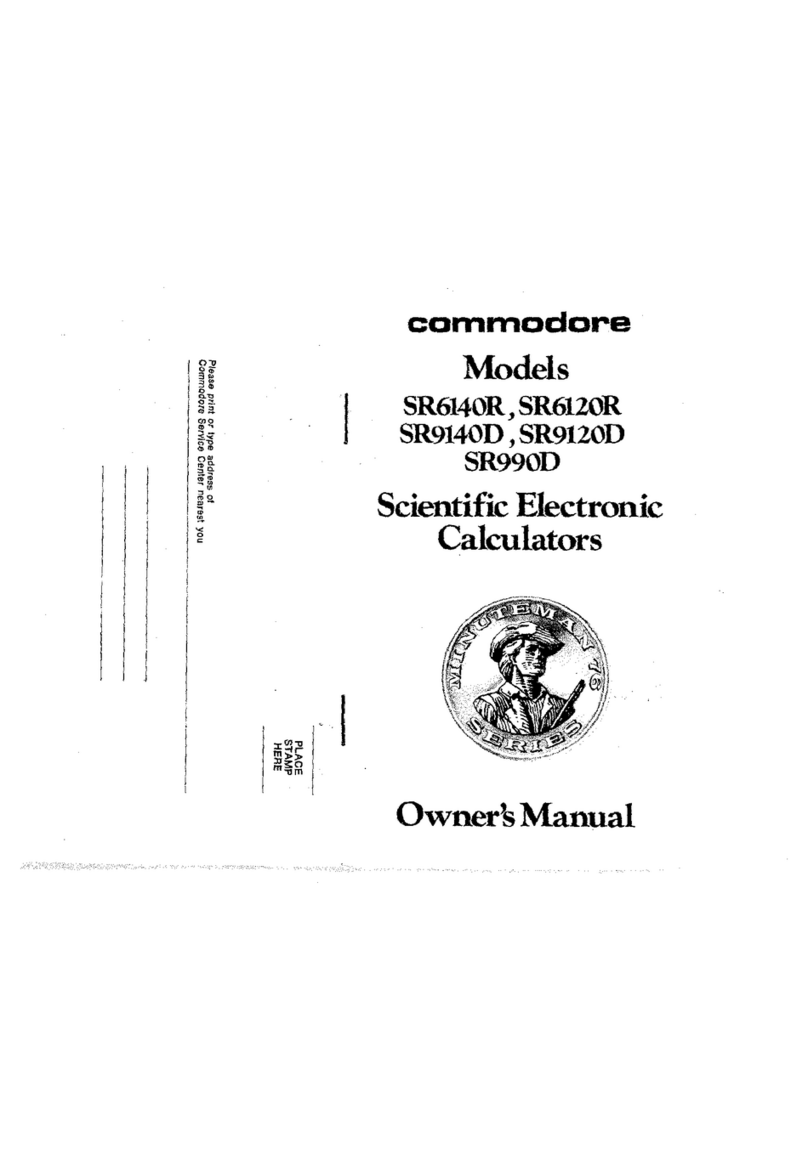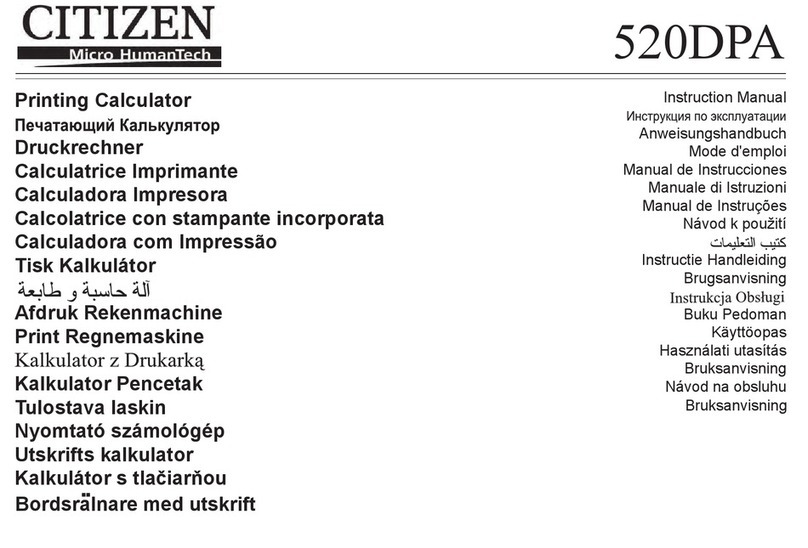HP 17BIIPLUS User manual

hp calculators
HP 17bII+ Discounting & Discounted
Cash Flow Analysis
It's About Time
The Financial Registers versus Discounted Cash Flow
Discounting a Single Sum
Discounting and Compounding
Discounting a Series of Sums
Editing
Contrasting Annuities

hp calculators
HP 17bII+ Discounting & Discounted Cash Flow Analysis
IT'S ABOUT TIME:
Discounting is the process of estimating the present value of future benefits. It is adjusting future value downward because of the
time lapse of having to wait to get that future amount. Ask yourself what you would rather have: $100. right now or $100. 20 years
from now. The first alternative you like. The second you barely care. They are identical sums of money. The difference is you have
to wait so long to get the money in the second case that you feel it practically is worthless.
Time, yes, time has affected the value of money. We see this using the financial registers. And we will see it here in talking about
discounted cash flow analysis. But there is a difference in using the financial registers and using the discounted cash flow functions
in your HP 17bll+. It has to do with the cash flows in the future that you are discounting.
THE FINANCIAL REGISTERS VERSUS DISCOUNTED CASH FLOW:
If it is one sum of money you are discounting or a series of equal sums of money equally spaced apart in time, we will use the
financial registers. If the future value you are discounting, on the other hand, is a series of sums that vary in amount, then you must
use discounted cash flow analysis to estimate the present value of such sums. We'll look at both.
DISCOUNTING A SINGLE SUM:
First, using the financial registers to discount a single sum. What is the present value of $40,000. that you are going to receive ten
years from now if you discount it at 8% annually? What is this asking you? Why would you even be interested in thinking about the
present value of this money? You are still going to have to wait ten years to get it, aren’t you?
Well, maybe it is a trust fund that is maturing in ten years, but an investor has approached you and offered to cash you out now. Of
course, for a lesser sum, since there is still that 10-year wait to get through.
The Keystrokes
This is annual discounting, so ensure that your calculator is set to 1 payment per year. If it is not, from the main menu, press:
FIN
TVM
OTHER
1
P/YR
Get back to the TVM menu:
EXIT
Clear with 'SK' (shift key) and 'CLR DATA' and discount with these keystrokes:
40000
FV
10
N
8
I%YR
PV Answer: -18,527.74
DISCOUNTING AND COMPOUNDING:
What does this mean that the present value of $40,000. discounted at 8% annually over 10 years is $18,528. (rounded)? It is saying
that you could cash out that trust fund at this $18,528., take the money and put it in an 8% compound annual account (in present
hp calculators - 2 - HP 17bII+ Discounting & Discounted Cash Flow Analysis

hp calculators
HP 17bII+ Discounting & Discounted Cash Flow Analysis
value as a negative) and at the end of ten years you would have $40,000. (in future value as a positive). That is, the $40,000. ten
years from now and the $18,528. today are equal in value but separated by time, under the conditions given in this example of 8%
annual discounting and a 10-year time span.
You probably feel more comfortable with compounding. That is starting with a given sum and letting it grow in the future as it
accumulates interest. We are all used to this concept. Well, discounting is the same thing but done in the opposite chronological
direction. Compounding is starting with a present sum and watching it grow in the future. Discounting is the time reverse, starting
with a given future sum and bringing it back to a present value.
Try taking that $18,528. that we calculated above and compound it forward in time under the same conditions as we discounted the
$40,000.. Keystrokes for this would be:
18527.74
PV
10
N
8
I%YR
FV Answer: $40,000.00
Discounting and compounding are doing the same thing, just in opposite time directions of one another. Relating discounting to
compounding this way may make it easier for you to grasp the concept of discounting.
DISCOUNTING A SERIES OF SUMS:
Remember, if the sums are the same, we can use the five financial registers, putting that sum into the PMT register. But, if they are
different, we must use discounted cash flow. We also must use discounted cash flow if the sums are not equally spaced apart,
regardless of whether or not the sums are the same each time.
From the main menu press ‘FIN’ and then press ‘CFLO’ to get to the discounted cash flow menu. Here we will work out the present
value of a series of sums. First, let’s get the present value of the projected incomes described below:
Estimated cash flow at the end of period 1: $30,000.
period 2: $35,000.
period 3: $50,000.
Money received at the end of a period is called an "ordinary annuity." We'll talk more about this later when we contrast it with an
"annuity-payable-in-advance."
The Discount Rate
You are at the beginning of the first period and you are estimating that your incomes or an asset producing incomes will be those
shown above. What is the value today - the present value - of these future benefits? Before we can discount them to a present
value, we must decide upon the rate at which we are going to discount. This rate should reflect the rate of return you think you
could earn today on an investment (remember the relationship between compounding and discounting). It should also reflect the
risk, the degree of uncertainty concerning whether or not you will really earn those funds as projected. Let’s use 10%.
Entering the Flows
In your cash flow menu if it has been cleared you should see “FLOW(0)=?,” which refers to the purchase price for an asset. If it has
not been cleared, press in 'SK,' the shift key, and 'CLR DATA.' The calculator will ask you: "CLEAR THE LIST?" Press 'YES' and
that will bring you to "FLOW(0)=?" in the display.
hp calculators - 3 - HP 17bII+ Discounting & Discounted Cash Flow Analysis

hp calculators
HP 17bII+ Discounting & Discounted Cash Flow Analysis
We are going to consider what we pay for an asset when we talk about net present value and internal rate of return in another
section. For now we will look only at future incomes. So, press ‘0’ and ‘INPUT.’ That keeps cash flow 0 at zero and moves you to
the next cash flow. You should now see “FLOW(1)=?” in your display.
It is time to enter our cash flows. See what follows this explanation if you want to jump ahead and view all the keystrokes in one list.
First, though, we are going to go through them one at a time showing why each keystroke is necessary.
Press in on your keyboard the first year’s cash flow of $30,000. and then hit ‘INPUT.’ Next you should see “#TIMES(1)=1.” That
means the cash flow for one period only. You are not projecting that cash flow for any more than one period. It is saying next year it
is going to be different. Press ‘INPUT’ again. That will tell the calculator you want the cash flow for one period only - it will keep the
“#TIMES” at “1.” And, it brings you to the next cash flow.
How Many Straight Times?
If you are not seeing this “TIMES” indication and instead you see “FLOW(2)=?,” this function on timing has been turned off. Hit the
‘EXIT’ button once and that should bring you to the menu where you see “#T?” to the far right. Press that key and you should see
“#TIMES PROMPTING: ON” come on the display briefly.
Your calculator gives you this option so that if all your cash flows are only for one period, that is, you don’t have two or more
consecutive periods of the same amount of cash flow, you don’t have to keep telling the calculator that each cash flow is only for one
period. It will just automatically retain each cash flow for one period.
Back to the Cash Flows
Let’s continue with the cash flows, keeping the #TIMES function on. You are at the second cash flow. Press in ‘35000’ and ‘INPUT.’
That records your next cash flow and brings you to “#TIMES(2)=1” in your display. Retain that command for one period only by
pressing ‘INPUT.’ Now your display shows “FLOW(3)=?.” Put in your last cash flow. Press ‘50000’ and ‘INPUT.’
The Calculation Menu
That is as far as you have to go. After putting in your $50,000. for the third period cash flow, “#TIMES(3)=1” comes up on your
display. Leave that as it is and press the ‘EXIT’ key to get to the menu that will give you a choice of calculating with your cash flows.
See it to the far left of the menu choices? Press ‘CALC’ to get into the calculation menu.
For now we will use two of these menu choices, the “I%” and “NPV.” The “I%” is the rate at which you are going to discount. We
had decided on 10% earlier, so press ‘10’ and then ‘I%.’ Your decision should show up in the display.
Now it is time to calculate the present value. That is the function of the menu choice that reads “NPV,” which stands for “net present
value.” Present value and net present value here are the same, because we did not record a purchase price in cash flow “0.” If you
read our section on net present value and internal rate of return, you will see present value and net present value can be different.
Press 'NPV.' Your answer should read on the display “NPV=93,764.09.”
hp calculators - 4 - HP 17bII+ Discounting & Discounted Cash Flow Analysis

hp calculators
HP 17bII+ Discounting & Discounted Cash Flow Analysis
This means that the value today of the three future cash flows we entered discounted at 10% is $93,764. (rounded). Another way to
look at it is if you purchased an asset for $93,764. and you earned those three cash flows, you would be making a 10% return per
period on your investment of $93,764.
The Keystrokes Used to Calculate Present Value
0
INPUT
30000
INPUT
INPUT
35000
INPUT
INPUT
50000
INPUT
EXIT
CALC
10
I%
NPV Answer: 93,764.09
Try Another Example (With Two Differences)
Estimated cash flow at end of period 1: $75,000.
period 2: ($25,000.)
periods 3 through 7: $100,000./period
period 8: $1,200,000.
Discount rate: 7%
We have two things here we didn’t have in the first cash flow: a negative cash flow, meaning a loss, and equal consecutive cash
flows.
Don't Forget to Clear
We have a new series of cash flows. So, in the cash flow menu, clear by pressing ‘SK’ and ‘CLR DATA.’ Your display will ask you if
you are sure to want to clear. Hit ‘YES’ and that will clear all the information and bring you back to cash flow “0.”
Cash Flows
You are ready to insert your cash flows. Again, there is no purchase price, so hit ‘0’ and ‘INPUT.’ Then, ‘75000’ and ‘INPUT’ for the
first cash flow. Then ‘INPUT’ again to show you want this for one time only. That should bring you to the second cash flow. Press
‘25000’ and then ‘+/-’ to show it is a negative cash flow, a loss for that period. Put it in as the second cash flow now by hitting
‘INPUT’ and then ‘INPUT’ again to keep the “TIMES” at “1.”
hp calculators - 5 - HP 17bII+ Discounting & Discounted Cash Flow Analysis

hp calculators
HP 17bII+ Discounting & Discounted Cash Flow Analysis
Consecutive, Equal Cash Flows
Put in the third cash flow with ‘100000’ and ‘INPUT.’ This time, however, we want it more than one time, don’t we. That is because
this cash flow is the same for each period from period 3 through period 7. That is five straight periods. So, when you get to
“#TIMES(3)=1” in your display after inputting the $100,000., tell your calculator you want this five straight periods by pressing ‘5’ and
‘INPUT.’ You use this function any time you have consecutive, equal cash flows.
Finish up by pressing ‘1200000’ and ‘INPUT’ for the fourth cash flow.
Calculate Again
Now you are ready to calculate. Press ‘EXIT’ and ‘CALC.’ Press ‘7’ and ‘I%’ to put in the discount rate and then calculate present
value by pressing ‘NPV.’ Answer: $1,104,795.54
The Keystrokes
0
INPUT
75000
INPUT
INPUT
25000
+/-
INPUT
INPUT
100000
INPUT
5
INPUT
1200000
INPUT
EXIT
CALC
7
I%
NPV Answer: 1,104,795.54
EDITING:
You can review and change the information you have put into your cash flow menu. From the calculation menu press ‘EXIT,’ which
brings you back to the cash flows you entered. You can use the two arrow buttons to the left of your keyboard to go up or down your
entries, cash flow '0' being considered the top of the list. Press the arrow up or down key until you reach what you want to change.
Key in your new number and press 'INPUT.' You could then calculate a new present value by pressing ‘EXIT,’ ‘CALC,’ and ‘NPV.’
CONTRASTING ANNUITIES:
One final point on cash flows. As mentioned earlier, we have been dealing with “ordinary annuities,” that is a flow of cash in which
each payment is assumed to be made at the end of the period. This is often how cash flows are handled in the valuation of assets.
On the other hand, with an "annuity payable-in-advance" it is assumed the cash flow is going to come at the beginning of a period,
such as payment on a net lease, paid at the outset of the lease period. You could adjust for that in your cash flow menu by putting
hp calculators - 6 - HP 17bII+ Discounting & Discounted Cash Flow Analysis

hp calculators
HP 17bII+ Discounting & Discounted Cash Flow Analysis
the first period’s cash flow in “FLOW(0),” the second in “FLOW(1),” thereby pulling up all the cash flows from the end to the start of a
period. For the series we just completed, the $75,000. would go into “FLOW(0),” the ($25,000.) into “FLOW(1)” and so on. This will
make the cash flows worth more, since they are going to be received earlier.
hp calculators - 7 - HP 17bII+ Discounting & Discounted Cash Flow Analysis
Other manuals for 17BIIPLUS
7
Table of contents
Other HP Calculator manuals
Popular Calculator manuals by other brands
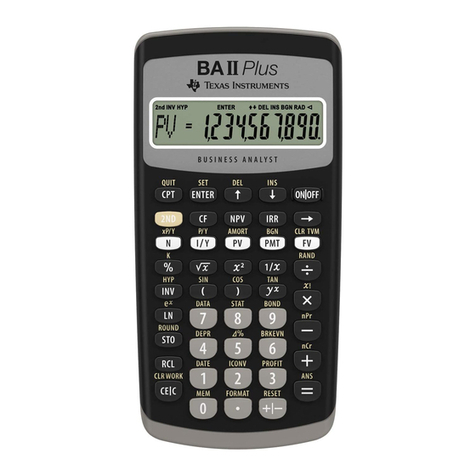
Texas Instruments
Texas Instruments BA II Plus user guide
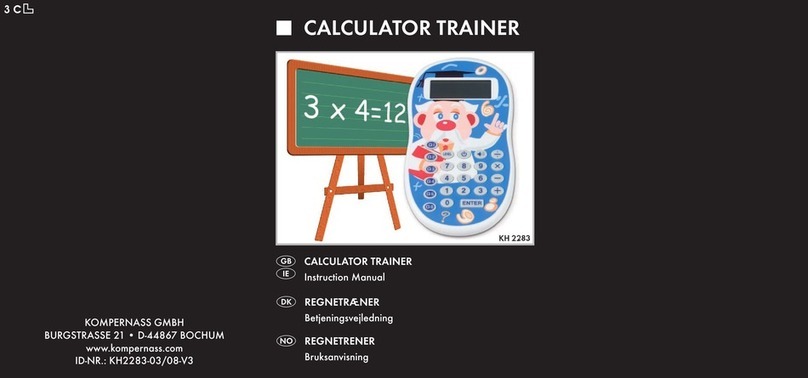
Kompernass
Kompernass KH 2283 instruction manual
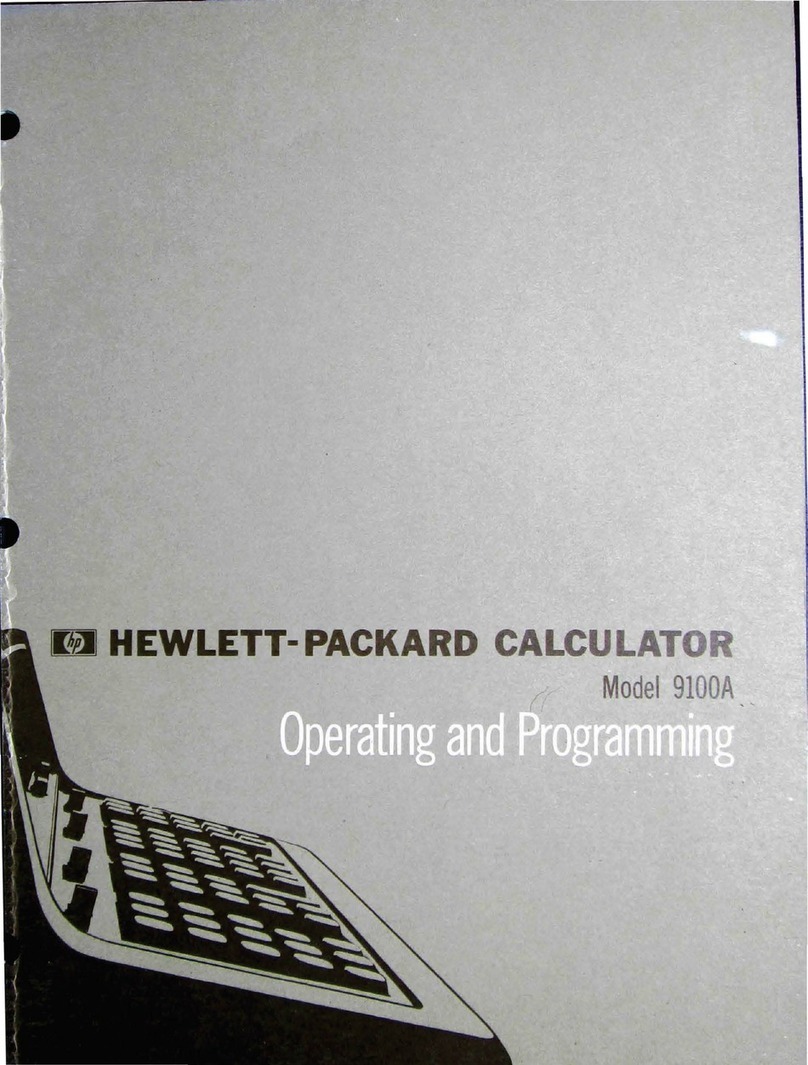
Helwett Packard
Helwett Packard 9100A Operating and programming manual
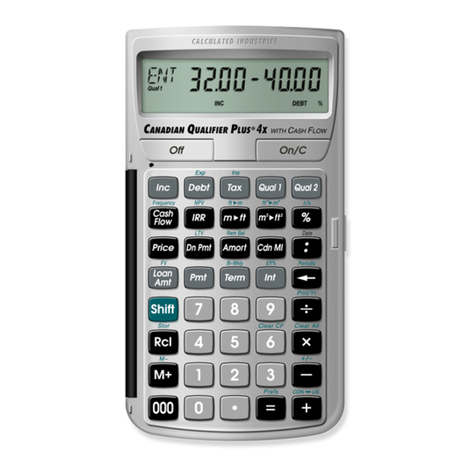
Calculated Industries
Calculated Industries 3423 user guide
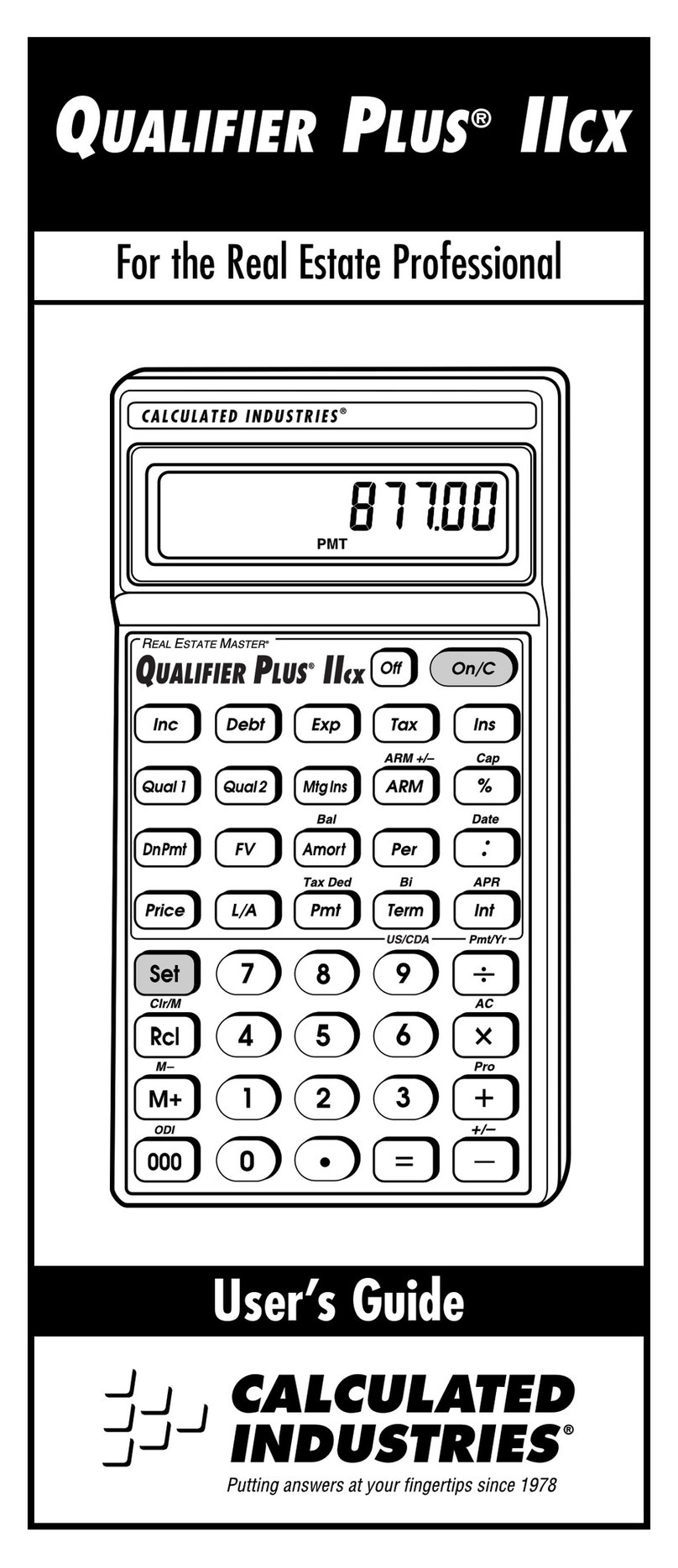
Calculated Industries
Calculated Industries Qualifier Plus IIcx user guide
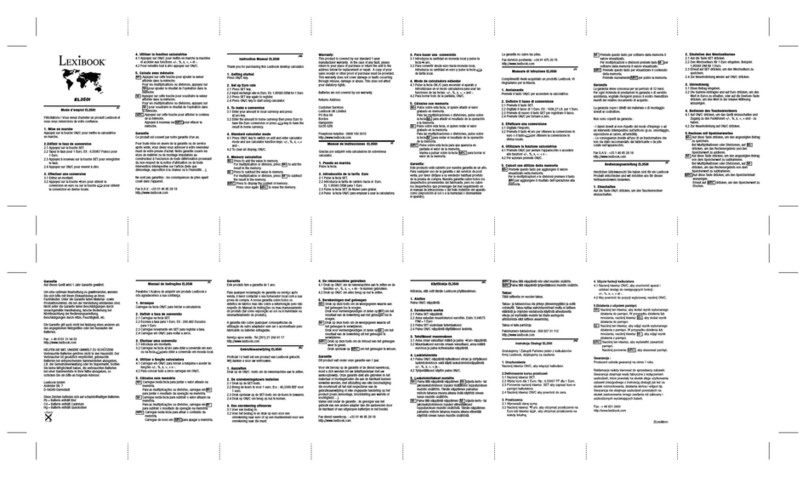
LEXIBOOK
LEXIBOOK EL350 instruction manual

